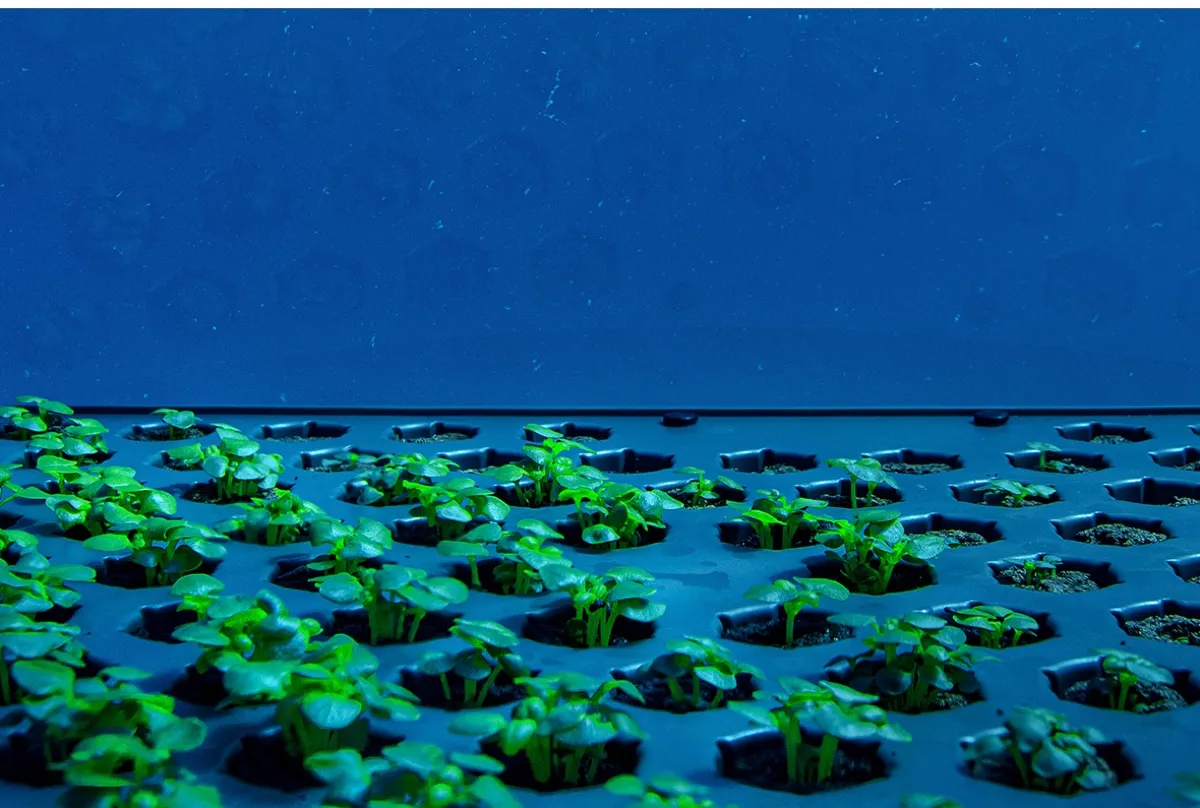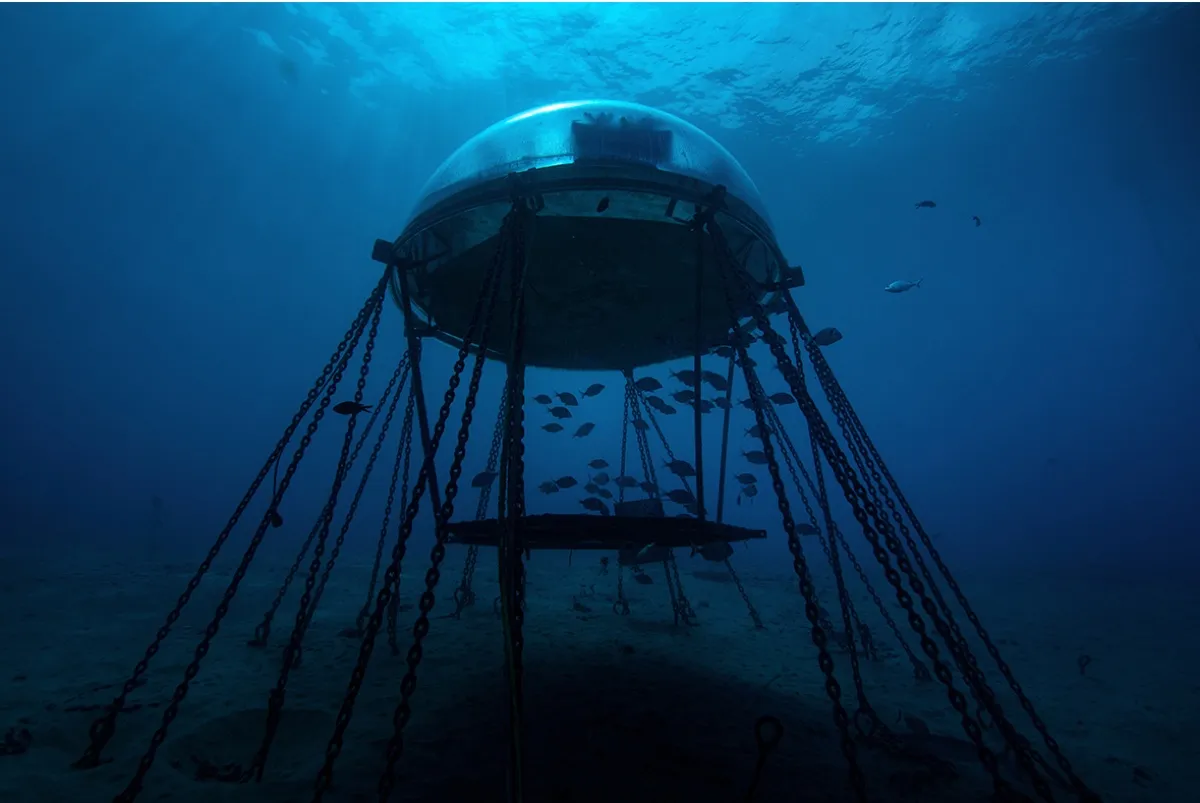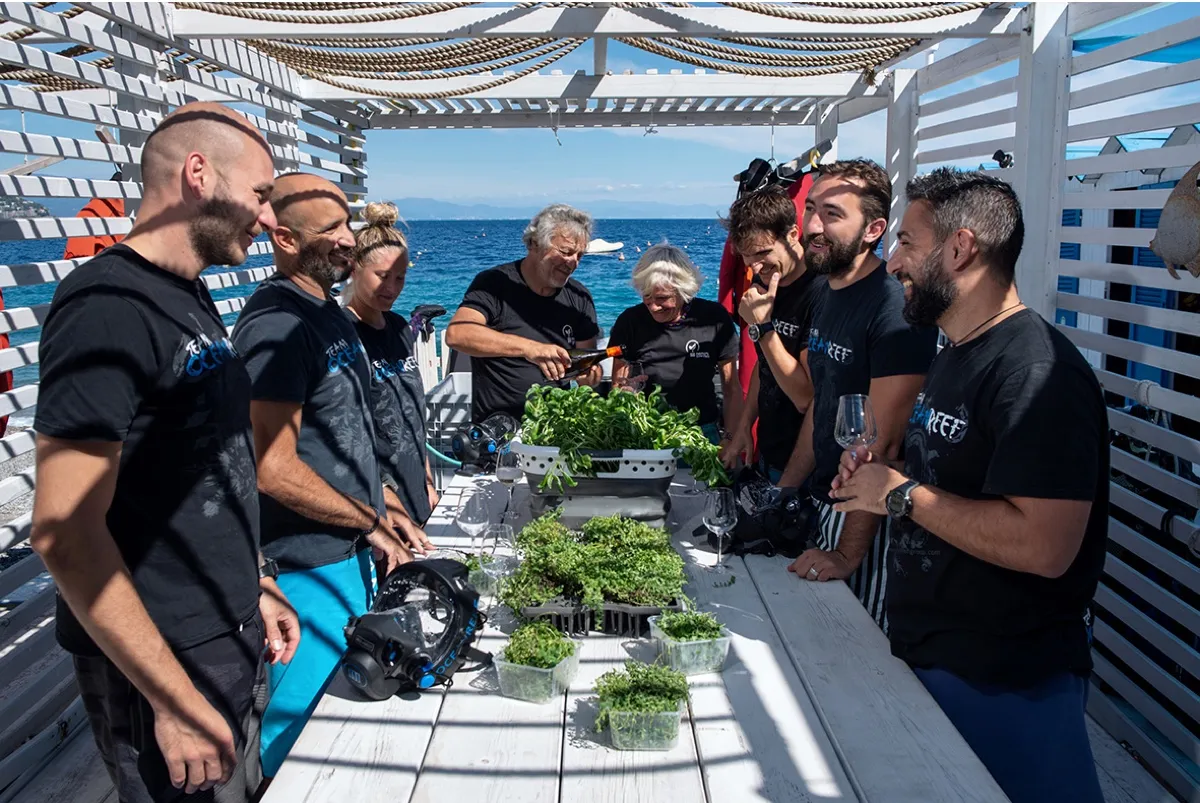A decade ago, Luca Gamberini’s father, Sergio, decided to pursue what seemed to Luca like a madcap scheme to grow plants under the sea.
The Gamberini family business, Ocean Reef Group, specialised in diving and scuba equipment. Agriculture was not part of the picture. But after the idea to plant underwater crops emerged from a dinner between Sergio – who had a passion for gardening, as well as scuba diving – and a farmer friend of his, he decided to try it.
“It was kind of a bet, a fun joke,” says Gamberini. “And my father was like, ‘hey, you know what, I’m actually going to try that.’ And he did. And it worked.”
To start, they used small, curved, transparent balloons sunk below the water and filled with air, providing an underwater dome. Initially, the family kept a plant alive underwater, then tried planting a basil seed, which sprouted and grew.
But Gamberini says he initially couldn’t really see a good reason for it. “I was the number one hater. I opposed this so much,” he says.
He was also opposed to the decision to implement the scheme off the coast of Noli, Italy – the family’s usual holiday location – as it would mean that they would always end up working on their holidays, rather than relaxing.

But around five years ago, the first time he visited one of the new, larger, rigid underwater domes the family had developed, he found himself changing his mind.
“In my first minute in one of these big environments, I was like, ‘Ah, okay, that’s quite cool,’” he says. “These rigid domes are so much more beautiful, and incredibly easy to attend to. They make much more sense and they make the technology work. So that’s when I jumped from being the number one hater and opposer of the project to actually the number one fan.”
Today, Nemo’s Garden – the start-up that emerged from that dinner conversation – has six domes, each holding around 2,000 litres of air, located at depths of between five and 11 metres.
To tend to the plants, divers enter the domes from below, their legs still hovering in the water while their upper torsos emerge in the air of the biosphere. When plants are harvested, they are placed in reusable bags or containers, which are sealed and brought to the surface of the sea to be collected.

The company has grown a huge variety of plants underwater at the site in Italy, from its trademark basil, to other medical and culinary herbs, strawberries, lettuce, tomatoes, beans, quinoa, and even tobacco (for vaccine purposes, Gamberini says).
Aside from the dome being suited for crops that require a high-humidity environment, the limitations are mainly in size, says Gamberini. “Due to the geometry of the dome, we cannot grow big stuff. We have to grow high-value and highly-requested produce.”
The plants are grown in a nutrient-rich solution (a method known as ‘hydroponics’), removing the need for soil. Meanwhile, the domes provide the plants’ water needs by harvesting freshwater from seawater. The domes are slightly hotter than the outside sea temperature, which means that water from the seawater ‘floor’ evaporates inside the dome and condenses on its curved inside surface as freshwater. This then ‘rains’ on the plants.

This setup also allows an exchange of CO2from the ocean inside the dome, adds Gamberini. “We’ve noticed that this environment doesn’t really need to be replenished that much,” he says.
In many ways, the technology is similar to vertical farming systems: it’s a soil-free, controlled and carefully monitored environment, remote from the farmer, with live cameras in every pod. But in the underwater system, the surrounding sea provides an incredibly stable thermal environment for the plants, therefore reducing energy use.
Read more about plants:
- Botanists' tips on how to plant for heatwaves
- Are plants conscious?
- How scientists are working to turn poisonous plants into edible crops
The light from the Sun that reaches underwater is also sufficient for the growth of the plants, Gamberini adds, compared to the LED lights in vertical farms, which again use energy. He also says the plants grow faster and have higher levels of essential oils.
There could even be an ecological advantage. A survey carried out through a scholarship in 2019 concluded that the Nemo’s Garden structure is likely having a positive impact on the local ecology of the area. “The amazing thing about the ocean is that whenever you put something underwater that acts like an artificial reef, the ecosystem just flourishes,” says Gamberini.

So could this form of agriculture ever really be scaled up to compete with conventional farming? Dr George Littlejohn, associate professor of plant and fungal biology at the University of Plymouth, says he feels that niche production is more likely.
He notes that the technology is not yet at a stage where it is a viable way to produce high yields of crops, and specifically cannot currently provide the calorie- and protein-rich foods needed as the basis of our diets. “This is [also] common for many vertical farming systems,” he adds.
Underwater farming does have the advantage of not taking up space on land, says Littlejohn, but it also has several pitfalls, including the extra energy inputs required to deliver nutrients to the plants, the inconvenience of planting and harvesting, and the high maintenance of the whole system.
He also notes that plants are already well-adapted to thrive in the conditions found onterra firma, where they have access to the full spectrum of light, information on the time of day via light and temperature cues, along with nutrients and CO2.

However, Littlejohn says that developing controlled growth environments in challenging places, as Nemo’s Garden is doing, is “essential” for future space exploration. “It may be that insights gained from growing underwater will give benefits in exploring further than we can yet see,” he says.
Of course, Nemo’s Garden is not the only project pushing the boundaries of where we can grow plants. Others include the University of Arizona’s Prototype Lunar Greenhouse, the plant growth experiments currently being carried out on the International Space Station, and NASA’s OMEGA system, which floats on the surface of the sea and grows algae.
Despite the space-age look of the pods at Nemo’s Garden, Gamberini says imagining the technology being used on another planet such as Mars is “way above [his] paygrade”.
There could be an application in space travel, he says. The intense flavours of the crops grown in the high-pressure habitats underwater could be helpful to bring flavour to foods eaten in low-pressure environments – such as in space – where our taste buds can go awry.

But perhaps more useful for the foreseeable future is the potential impacts of underwater farming here on Earth. Gamberini says he sees underwater farms as an option, especially for coastal communities outside the Western world, such as the Maldives, which lacks arable land for agriculture but has plenty of experienced divers. “I do think that it is a really viable option to put next to all the other technologies that are coming up,” says Gamberini.
For now, the company is looking to its next stage of scaling-up, after being selected for the acceleration programme for Neom, Saudi Arabia’s controversial megaproject to build a futuristic smart city from scratch in the desert. This autumn, Nemo’s Garden will present business and feasibility studies to build 30 biospheres for the project, which could produce 3.1 tonnes of basil per year with current technology.
Gamberini hopes that next year, they could be setting up a project at Neom to be the first real underwater farm in the world.
By 2030, he would like the company to be employing hundreds of people and implementing the underwater domes around the world. “Nobody has done it before,” he says. “We can only learn through experience.”
Read more about the oceans:
- Is it true that the Pacific and Atlantic Oceans don't mix?
- How does plastic get into the oceans?
- 12 of the weirdest deep-sea creatures that lurk in the oceans' depths
- This article first appeared in issue 382of BBC Science Focus – find out how to subscribe here
